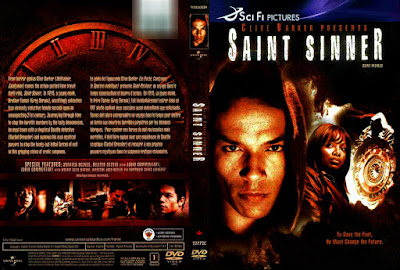R.I.P. Carol Speed (Part I: 1971-73)
Monday, January 31, 2022
R.I.P.: Carol Speed
R.I.P. Carol Speed (Part I: 1971-73)
Friday, January 28, 2022
Short Film: Neighbours (Canada, 1952)
Tuesday, January 18, 2022
The Giant of Metropolis (Italy, 1961)
Tuesday, January 11, 2022
More or Less "Best of" 2021
"Best of" is always relative here at a wasted life, as the films we give good reviews don't always show up in our end of the year round-up while films we trash do. This is because our choice is based less on quality than staying power: how often we think back upon a film, or the general feeling it stirs when we think about it again. Likewise, we usually watch so much crap that coming up with a "Top 10" is almost close to impossible — a problem exacerbated by the fact that some years (like 2021) we don't actually review all that many films: of the 48 blog entries in 2021, only 24 were actual feature film reviews.
All that aside, here is our selection: the nine movies we watched in 2021 that we found the most noteworthy, for whatever reason, and in no particular order. Click the linked titles to read the original reviews.
Escape Room
(USA, 2019)
"Escape Room is a nail-biting blast."
a wasted life (6 March 2021)
Trailer to
Escape Room:
The Bar
(Spain, 2017)
"A great film for our age of paranoia and conspiracy theories."
a wasted life (17 April 2021)
Trailer to
The Bar:
All My Friends Are Dead
(Poland, 2020)
"Definitely not everyone's cup of tea, but if you are the type that enjoys a blackly funny body count, this tightly shot grotesque will probably offer you a pleasant evening's viewing."
a wasted life (18 June 2021)
Trailer to
All My Friends Are Dead:
Exhibitionisten Attacke
(Germany, 2000)
"The apogee of filmmaking inability, and a visual and moving illustration of a total lack of anything remotely professional, be it the mildest capacity to tell a story, act, direct, do special effects or gore, anything."
a wasted life (12 July 2021)
5 minutes of total inability:
Little Monsters
(Australia, 2019)
"An enjoyable rom-zom-com that is much better than it should be, above all due to the screen presence of Lupita Nyong'o, looking absolutely smashing in her yellow summer dress."
a wasted life (1 August 2021)
Trailer to
Little Monsters:
Ánimas
(Spain, 2018)

"Hardly nondescript, easy-to-accept cinematic fodder, the movie will best appeal to those who like their movies different. Imagine a lazy, no-budget Wes Anderson directing a Spanish-language horror thriller, and then you get a slight idea of what to expect."
a wasted life (29 August 2021)
Trailer to
Ánimas:
The Corpse Vanishes
(USA, 1942)
"To simply dismiss The Corpse Vanishes as a threadbare Lugosi vehicle that pulls out a cheap version of every cliché ever found in any other Lugosi film and barely manages to string them together to make a less-than-coherent and extremely ridiculous plot actually does the movie great disfavor."
a wasted life (13 September 2021)
Trailer to
The Corpse Vanishes:
The White Buffalo
(USA, 1977)
"Go in expecting nothing, you might even find it enjoyable."
a wasted life (6 October 2021)
Trailer to
The White Buffalo:
Cave of the Living Dead
(Germany / Yugoslavia, 1964)
"All in all, Cave of the Living Dead is far more an enjoyable film than it is a good one. It will surely appeal to the child within you, if not to the adult fan of somewhat tacky Eurotrash films that you are now."
a wasted life (24 Nov 2021)
Full movie:













































